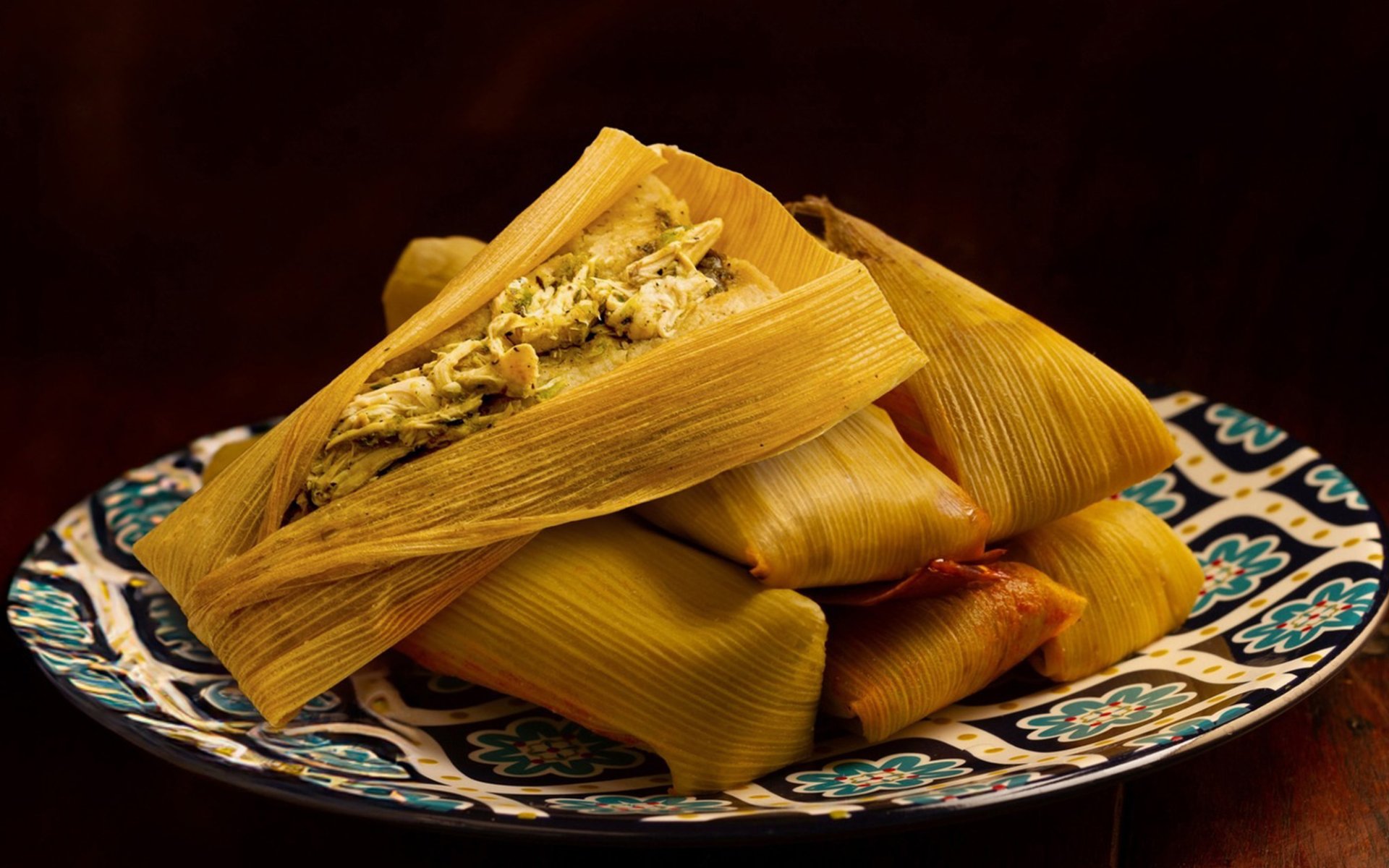Tamales

The story of Tamales begins in Mesoamerica, a region that encompasses present-day Mexico. Archaeological evidence indicates that tamales have been a part of Mesoamerican diets for over 8,000 years, serving as a staple food for the ancient Mayans, Aztecs, Incas, and other indigenous groups. This highlights their significant role in the survival and culture of these ancient civilizations.
Characteristics and Etymology of "Tamales"
Although tamales might visually resemble some steamed wrapped foods in other cultures, these two dishes are not truly similar in terms of core ingredients and flavors. Tamales are made from corn masa (dough), which undergoes a special process to make it soft and distinctively fragrant. They are filled with a wide variety of ingredients, from meats like turkey, rabbit, and chicken, to vegetables and fruits such as pumpkin, beans, chilies, and onions. The filled masa is then wrapped in corn husks or banana leaves and steamed until cooked, resulting in a tender and delightful texture.
The word Tamales originates from the Nahuatl language of the Aztecs, where it was originally known as Tamalii, meaning "wrapped." Historically, tamales were not just a delicious food; they also played a crucial role in important religious and social ceremonies. They were often served during significant rituals like weddings, harvest celebrations, and offerings to deities. Additionally, tamales served as a vital sustenance for warriors on long journeys, thanks to their portability and high nutritional value.
The Evolution of Tamales After the Arrival of the Spanish
As Mesoamerican civilizations flourished, the popularity of tamales spread throughout the region, as the Aztecs disseminated this culinary tradition. Later, after Christopher Columbus arrived in Mexico in the 16th century, tamales underwent further evolution.
Under the influence of the arriving Spanish, tamales soon developed to another level. New ingredients and spices introduced by Europeans were incorporated, such as pork, beef, cheese (which was not indigenous to Mesoamerica), cumin, chili powder, and oregano. These additions brought new aromatic and complex flavor profiles. Furthermore, European settlers introduced wheat flour, which led to the development of Corundas, a wheat-based tamale found in Michoacán, Mexico. This demonstrates a fascinating fusion of culinary cultures.
Widespread Adoption and Cultural Significance in Latin America
Over time, tamales became an important part of trade routes and cultural exchange, traveling across borders throughout Latin American countries such as El Salvador, Nicaragua, Colombia, Peru, and many others. Each of these nations adapted tamales to their own styles, resulting in diverse flavors and preparation methods based on local ingredients and preferences. This has created a vibrant and exciting culinary variety.
Moreover, tamales are deeply intertwined with cultural traditions and celebrations throughout Latin America. There is an annual holiday on February 2nd called Dia de la Candelaria (Candlemas Day), also widely known as Dia de la Tamales (Tamales Day). On this day, families gather to enjoy this delicious dish in a joyful atmosphere. Similarly, during Christmas, tamales are a staple in many Latin American households, symbolizing family gatherings, sharing, and festive celebrations.
Tamales in the Modern Era: Transcending Borders and Reaching Global Palates
In the contemporary world, tamales have transcended cultural boundaries in Europe and America, gaining popularity worldwide. Today, we can find tamales in various forms and flavors in different parts of the world. Food trucks, restaurants, and street food stalls alike have modernized traditional tamales to meet evolving consumer demands and dietary restrictions, such as vegan tamales (using only vegetable fillings) and gluten-free tamales (made from 100% corn masa).
Tamales continue to reflect a long and rich history, diverse cultures, and a remarkable ability to adapt to changing times. They remain a vibrant culinary legacy that continues to evolve.


